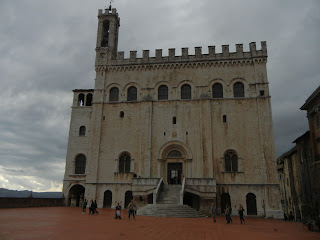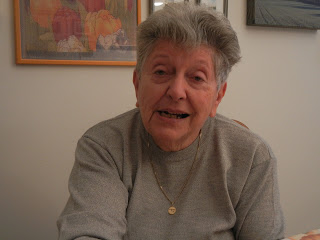Assisi
Another
day of on and off rain and it's a good time to get caught up on some
writing. A couple of years ago when I first came to Assisi, I met Don
Matteo; rather, I should say I found the TV program one night while
channel surfing and immediately I fell in love with this wonderful
character. From that moment on, I never missed a segment in all of my
trips here; unfortunately, the program finished last May and
Terence Hill (you might remember him from his westerns) is now
playing another character on a completely different program and Don
Matteo has become a memory from my past.
The
program took place in the hillside Umbrian town of Gubbio. Don Matteo
was the local and beloved parish priest who, each week, helped the
police solve crimes (usually murders), much to the frequent chagrin of
Maresciallo (the police captain) who never really wanted to admit
that he could use the help. Assisted by another police chief, who
fell in love with and ultimately married Maresciallo's daughter (and
there were plenty of twists and turns in that relationship saga),
Maresciallo was able to “appear in charge” and the “bad guys”
were always caught. Don Matteo was one of those “feel good”
programs, and, even though it always started off with a crime, the
heartful and generous priest always put everything in its proper
perspective.
So, I
have wanted to visit Gubbio for the past two years, but because the
train/bus connection is very inconvenient, the trip never
happened...until now. When I rented my current apartment last May,
Clara and Giovanni, the owners of this lovely home, and I got to
talking about the program and my “crush” on the parish priest and
they promised to take me to Gubbio when I returned here this fall.
After a wonderful lunch with the family a few weeks ago, the three of
us set out for my long awaited adventure.
Gubbio
is well-known for its Corsa dei Ceri, a run that happens every May
15th
when three teams, in honor of St. Ubaldo (patron saint of Gubbio),
each carry a stature of the saint weighing 280 kilograms, and,
starting out from the Palazzo dei Consoli, they run up a mountain to
arrive at the basilica of St. Urbaldo...always lots of people, lots of excitement, and lots of energy. For me, though, my trip to
Gubbio was all about checking out the piazza and the familiar streets that I remembered so
well from my hours of TV viewing. I even looked for Don Matteo...just
in case he heard that I was coming to town.

































